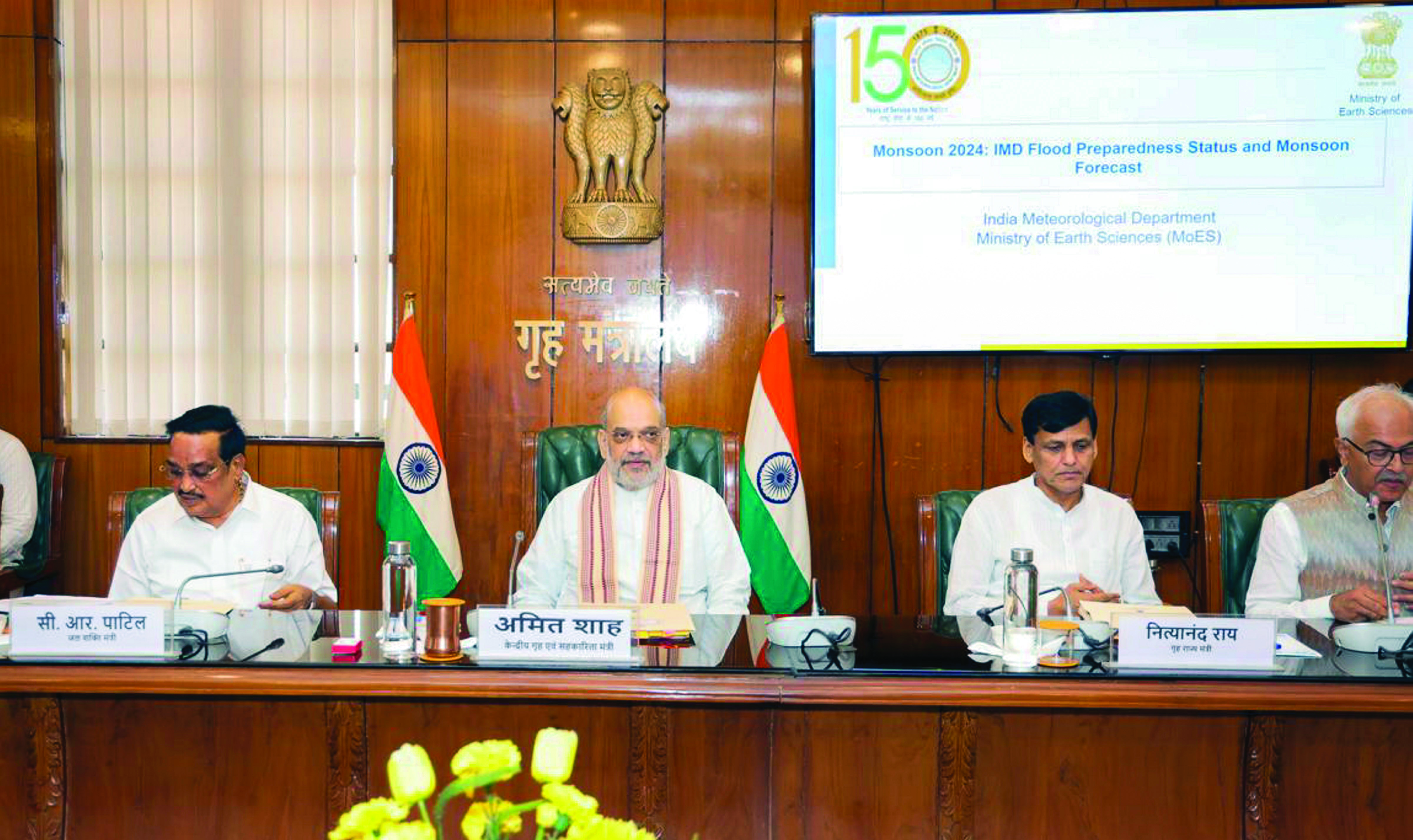Amit Shah reviews flood preparedness

NEW DELHI: Union Home Minister and Minister of Cooperation Amit Shah chaired a high-level meeting today to review the preparedness for flood management in New Delhi. The meeting focused on both immediate measures and long-term strategies to address flood risks and included discussions on adopting new technologies and utilising satellite imagery from the Indian Space Research Organisation (ISRO).
During the session, Amit Shah assessed the progress on actions decided in last year’s meeting. Emphasis was placed on the adoption of new technologies by various agencies and the expansion of their networks for effective flood management. The minister also reviewed preparations to tackle Glacial Lake Outburst Floods (GLOF), underscoring the importance of using ISRO’s satellite imagery for flood and water management.
Highlighting the ‘Zero Casualty Approach’ under Prime Minister Narendra Modi’s leadership, Amit Shah urged States and Union territories to implement the advisories issued by the National Disaster Management Authority (NDMA) promptly.
He instructed the India Meteorological Department (IMD) and the Central Water Commission (CWC) to expedite the recalibration of all flood forecasting equipment.
Shah directed concerned departments to conduct a detailed study of recent floods in Sikkim and Manipur and submit their findings to the Ministry of Home Affairs (MHA). Ensuring the functionality of floodgates on major dams and upgrading the river water level forecast systems were also key directives.
The Union home minister noted the susceptibility of non-perennial rivers to soil erosion and siltation, resulting in floods. He emphasised the importance of integrating natural drainage systems into road construction designs to mitigate flood risks.
Shah proposed the construction of at least 50 large ponds in the Northeast to divert and store water from the Brahmaputra River, which would aid agriculture, irrigation, tourism, and flood management, benefiting the local economy.
Shah also addressed forest fire prevention, instructing the NDMA and the Ministry of Environment, Forest and Climate Change (MoEFCC) to take precautionary measures such as creating fire lines, removing dry leaves, and conducting regular mock drills.
He called for an analysis of repeated forest fire incidents and the preparation of a detailed manual to manage forest fires effectively.
Regarding lightning strikes, the Home minister stressed the need for timely dissemination of IMD alerts through SMS, TV, FM radio, and other media. He advocated for the integration of weather, rainfall, and flood warning apps developed by various departments to maximise their reach and impact.



